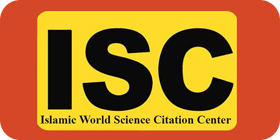Structural Modeling of the Prediction of Cognitive Disorganization Based on Emotional and Cognitive Working Memory in Students with Attention Deficit and Hyperactivity
Keywords:
Cognitive disorganization, Cognitive Working Memory, Emotional Working Memory, Attention Deficit, HyperactivityAbstract
Objective: This study aimed to develop and test a structural model predicting cognitive disorganization based on cognitive and emotional working memory among students with attention deficit and hyperactivity symptoms.
Methodology: This applied research employed a descriptive–correlational design. The statistical population comprised all 15–16-year-old male and female students in Tehran during the 2023–2024 academic year. Using multistage cluster random sampling, 250 students screened with the SNAP-IV questionnaire for attention deficit and hyperactivity symptoms were selected. Data were collected using the Cognitive Disorganization Questionnaire, the Halfback Cognitive Working Memory Test, and the Emotional Working Memory Questionnaire. Analyses were conducted using Pearson correlation, confirmatory factor analysis, and structural equation modeling.
Findings: Both cognitive and emotional working memory significantly predicted cognitive disorganization in students with attention deficit and hyperactivity. The correlation between cognitive working memory and cognitive disorganization was -0.851, explaining 72.5% of variance, while emotional working memory had a correlation of -0.604, explaining 36.5% of variance. The structural model demonstrated good fit (χ²/df<3, RMSEA<0.08).
Conclusion: Improving cognitive and emotional working memory capacities can substantially reduce cognitive disorganization among adolescents with attention deficit and hyperactivity symptoms. The proposed model provides a framework for cognitive training and rehabilitation programs to prevent adverse academic and psychological outcomes in this population.
Downloads
References
Alcalá, L. (2023). The Development of Executive Function Skills Through Culturally Organized Autonomy and Helping. Infant and Child Development, 32, e2460. https://doi.org/10.1002/icd.2460
Alcalá, L., & Cervera, M. D. (2022). Yucatec Maya Mothers' Ethnotheories About Learning to Help at Home. Infant and Child Development, 31, E2318. https://doi.org/10.1002/icd.2318
Alcalá, L., Cervera, M. D., & Fernandez, Y. S. (2021). How Yucatec Maya Children Learn to Help at Home. Human development, 65, 191-203. https://doi.org/10.1159/000518457
Brooks, S. J., Mackenzie-Phelan, R., Tully, J., & Schiöth, H. B. (2020). Review of the Neural Processes of Working Memory Training: Controlling the Impulse to Throw the Baby Out With the Bathwater. Frontiers in Psychiatry. https://doi.org/10.3389/fpsyt.2020.512761
Cervera-Montejano, M. D. (2022). Children's Learning to Be Vernacular Architects: Yucatec Maya Theory Behind LOPI. Journal of Study of Education and Development, 45, 549-566. https://doi.org/10.1080/02103702.2022.2059948
Cetin, I., & Padir, M. (2023). Examining the Relationship Between Cognitive Flexibility and Effective Problem Solving Skills in School Principals: A Canonical Correlation Analysis. Journal of Human and Social Sciences, 12(5), 2442-2457. https://doi.org/10.15869/itobiad.1260559
Chang, Z., Ghirardi, L., Quinn, P. D., Asherson, P., D'Onofrio, B. M., & Larsson, H. (2019). Risks and Benefits of Attention-Deficit/Hyperactivity Disorder Medication on Behavioral and Neuropsychiatric Outcomes: A Qualitative Review of Pharmacoepidemiology Studies Using Linked Prescription Databases. Biological Psychiatry, 86, 335-343. https://doi.org/10.1016/j.biopsych.2019.04.009
Chen, S., Yu, J., Zhang, Q., Zhang, J., Zhang, Y., & Wang, J. (2022). Which Factor Is More Relevant to the Effectiveness of the Cognitive Intervention? A Meta-Analysis of Randomized Controlled Trials of Cognitive Training on Symptoms and Executive Function Behaviors of Children with Attention Deficit Hyperactivity Disorder. Frontiers in psychology, 12, 810298. https://doi.org/10.3389/fpsyg.2021.810298
Cortese, S., Adamo, N., Del Giovane, C., & et al. (2018). Comparative Efficacy and Tolerability of Medications for Attention-Deficit/Hyperactivity Disorder in Children, Adolescents, and Adults: A Systematic Review and Network Meta-Analysis. Lancet Psychiatry, 5, 727-738. https://doi.org/10.1016/S2215-0366(18)30224-4
Ershadi Chahardeh, S., Seadatee Shamir, A., & Zabihi, R. (2024). The Effectiveness of Lumosity-Based Cognitive Empowerment on Maher Fluid Intelligence and Cognitive Functions in Elementary School Boys. International Journal of Education and Cognitive Sciences, 5(3), 86-93. https://doi.org/10.61838/kman.ijecs.5.3.11
Ghayebi Mehmandoost, M., Ghadami, M., Seadatee Shamir, A., & Rezaei, S. (2023). Islamic Managerial Intelligence and Successful Intelligence of Exceptional School Administrators. Political Sociology of Iran, 5, 4551-4566. https://doi.org/10.30510/psi.2022.362716.3993
Ghayebi Mehmandoost, M. R., Ghadami, M., Seadatee Shamir, A., & Rezaei, S. (2021). Developing a Model of Professional Competencies and Competencies of School Principals Based on Successful Managerial Intelligence with the Mediating Role of Personality Intelligence. Journal of Psychology of Exceptional Individuals, 11(42), 83-110. https://jpe.atu.ac.ir/article_13112.html
Jahangard, H., Ghorban Jahromi, R., Dortaj, F., & Seadatee Shamir, A. (2022). The Mediating Role of Attitudes Toward Learning and Tolerance of Ambiguity in the Relationship Between the Need for Cognition and the Need for Closure on the Working Memory of High School Students. Educational Psychology, 18(63), 31-58. https://doi.org/10.22054/jep.2022.65508.3542
Jones, M. R., Katz, B., Buschkuehl, M., Jaeggi, S. M., & Shah, P. (2020). Exploring N-Back Cognitive Training for Children With ADHD. Journal of Attention Disorders, 24(5), 704-719. https://doi.org/10.1177/1087054718779230
Khaleghi Tabar, S., Kashani Vahid, L., Seadatee Shamir, A., & Abolmaali Al-Hosseini, K. (2022). The Effect of Successful Intelligence Model Training on Tolerance of Ambiguity, Self-Regulatory Learning Strategies and Social Adjustment of Female Students. (Journal Title Needed). https://mjms.mums.ac.ir/article_21702.html
Kofler, M., Soto, E., & Singh, L. (2024). Executive Function Deficits in Attention-Deficit/Hyperactivity Disorder and Autism Spectrum Disorder. Nature Reviews Psychology, 1-19. https://doi.org/10.1038/s44159-024-00350-9
Medrano Nava, E., & Flores-Lazaro, J. (2024). Effects of Comorbidity on Executive Function Among Children with ADHD: Finding Trends. Applied Neuropsychology: Child, 13(2), 100-112. https://doi.org/10.1080/21622965.2022.2135440
Palov, G., & Dyulgerova, S. (2023). Cognition in Patients with Schizophrenia: Interplay Between Working Memory, Disorganized Symptoms, Dissociation, and the Onset and Duration of Psychosis, as Well as Resistance to Treatment. Biomedicines, 11(12), 3114. https://doi.org/10.3390/biomedicines11123114
Patton, K., & Winter, K. (2023). Researcher Positionality in Eliciting Young Children's Perspectives. Journal of Early Child Research, 21, 303-313. https://doi.org/10.1177/1476718X221145484
Roghani, F., Seadatee Shamir, A., Azad Abdolhpour, M., & Hashemi, N. (2024). The Multifaceted Fluid Test of Intelligence (MMFTI) for Fourth to Sixth-Grade Students. (Journal Title Needed). https://ijbmc.org/index.php/ijbmc/article/view/730
Savadkohi, L. G., Kamyab, M., Shamir, A. S., & Andishmand, V. (2024). The Effectiveness of Metacognitive Skills Training on Enhancing Crystallized Intelligence in Secondary School Students. Iranian Journal of Neurodevelopmental Disorders, 3(1), 10-18. https://doi.org/10.61838/kman.jndd.3.1.2
Seadatee Shamir, A. (2024). The Effectiveness of Teaching Math Skills on Increasing the Crystallized Intelligence of Secondary School Students of Shahed Schools. Journal of Psychological Dynamics in Mood Disorders (PDMD), 2(4), 136-152. https://doi.org/10.61838/kman.pdmd.2.4.14
Seadatee Shamir, A. (2025). Standardization of the Five-Factor Model of the Maher (First Version) Based on Metacognition Theory. (Journal Title Needed). https://doi.org/10.61838/ijbmc.v12i1.730
Seadatee Shamir, A., Mazboohi, S., & Marzi, S. (2019). A Confirmatory Factor Analysis and Validation of the Forms of Self-Criticism/Reassurance Scale Among Teachers. Quarterly Journal of Educational Measurement, 9(34), 133-147. https://doi.org/10.22054/jem.2019.20805.1520
Smoller, J. W., Andreassen, O. A., Edenberg, H. J., Faraone, S. V., Glatt, S. J., & Kendler, K. S. (2019). Psychiatric Genetics and the Structure of Psychopathology. Molecular Psychiatry, 24, 409-420. https://doi.org/10.1038/s41380-018-0026-4
Sucu, B. T., & Bedel, A. (2021). The Investigation of University Students' Social Problem-Solving Skills in Terms of Perceived Parental Attitudes and Cognitive Flexibility Levels. Kastamonu Education Journal, 29(4), 92-100. https://doi.org/10.24106/kefdergi.762868
Tekin, T., & Akın, U. (2021). The Relationship Between Initiative Taking Levels and Problem Solving Skills of School Administrators. Anadolu University Journal of Education Faculty, 5(2), 185-201. https://doi.org/10.34056/aujef.834231
Vazife, A., Seadatee Shamir, A., & Bahrami, H. (2020). Creating and Standardizing the Creative Mind Test on Executive Functions and Cognitive Emotion Regulation in Children with Attention Deficit/Hyperactivity Disorder (ADHD). (Journal Title Needed).
Veloso, A. S., Vicente, S. G., & Filip, M. G. (2022). Assessment of Hot and Cool Exceptional Skills in Children with ADHD: The Role of Performance Measures and Behavioral Ratings. European Journal of Investing, Health Psychology, and Education, 12, 1657-1672. https://doi.org/10.3390/ejihpe12110116
Vignapiano, A., & Koenig, T. (2019). Disorganization and Cognitive Impairment in Schizophrenia: New Insights from Electrophysiological Findings. (Journal Title Needed), 145, 99-108. https://doi.org/10.1016/j.ijpsycho.2019.03.008
Wong, A., & Landes, S. (2022). Expanding Understanding of Racial-Ethnic Differences in ADHD Prevalence Among Children to Include Asians and Alaskan Natives/American Indians. Journal of Attention Disorders, 26(5), 747-754. https://doi.org/10.1177/10870547211027932
Zelli, M. H., Seadatee Shamir, A., & Kazemi, A. (2025). The Effectiveness of the Maher Crystallized Intelligence Educational-Psychological Intervention on Enhancing Fluid Intelligence and Socio-Cultural Intelligence. Mental Health and Lifestyle Journal, 3(1), 1-14. https://doi.org/10.61838
Downloads
Published
Submitted
Revised
Accepted
Issue
Section
License
Copyright (c) 2025 Peyman Rastegari, Ali Akbar Arjmandnia, Gholam Ali Afrooz, Zahra Hoshyari (Author)

This work is licensed under a Creative Commons Attribution-NonCommercial 4.0 International License.









